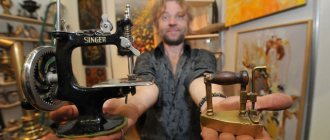Panic fear of dirt (Misophobia) and the microbes found in it (Germophobia) are two very similar painful phobias, characterized by the fact that the person suffering from them is very afraid of everything potentially infected with harmful microorganisms. As a result, he tries his best to avoid touching things around him and is afraid of tactile contacts with other people. Experts are convinced that the rapid increase in cases of mysophobia among the population is associated with the advertising of antibacterial agents. It is in such commercials that the environment is presented as a breeding ground for terrible harmful microorganisms that harbor dangerous illnesses.
Against this background, the “beginning” mysophobe develops an obsession that the more often he washes his hands, the lower the risk of contracting any infection. However, such activity quickly turns into a ritual, which only increases panic and reduces the body’s natural immunity to diseases.
Mysophobia is the fear of dirt and germs
Disease and dirt penetrate everywhere.
Keep your dishes clean. Vladimir Vladimirovich Mayakovsky
- 1.Causes of mysophobia
- 2.Symptoms
- 3.Treatment
- 4.Conclusion
- Xenophobia is fear/intolerance of the unfamiliar/strange.
- Anatidaephobia is the fear of being watched by a duck.
- Ergophobia is the fear of work
- Haptophobia - fear of being touched
- Social phobia - what is it, a disease of the mind or soul?
General information
Mysophobia , or otherwise fear of pollution, is a psychological disorder and is expressed in the form of an obsessive fear of getting dirty, being in a polluted room, and in general, of coming into contact with dirt and potentially contaminated objects.
It should be distinguished from germophobia, verminophobia, bacteriophobia (fear of germs) and other phobias , where fear consists of the fear of contracting an infectious bacterial or other disease when interacting with contaminated objects and the risk of getting germs, for example, on your hands. If earlier the desire to wash your hands was a sign of fear of dirt and obsessive-compulsive disorder , then later the American psychologist G.S. Stellivan found out that the basis is not a fear of dirt and germs, but solely the desire to ensure that hands are always washed.
Despite the fact that the disorder is quite rare, many famous people suffered from it - F. Nietzsche, V. Mayakovsky, V. Dobrynin, etc., and was also highlighted in such films as “It Can’t Be Better”, “Cleaning with Passion” ", in the television series "The Big Bang Theory" (main character S. Cooper)
Diagnostics
This disorder interferes with a person’s normal life; treatment of mysophobia is a matter for specialists, psychiatrists and psychotherapists, depending on the degree of its severity. To relieve the patient of obsessive panic, they use an integrated approach that combines techniques for influencing the psyche and medications. Healing takes time and effort, especially in advanced cases. The patient and the doctor will be required to diligently and follow all recommendations. Only in this case can we hope for remission and lasting results.
The specialist provides a test for mysophobia, based on the results of which he can conclude how serious the patient’s case is and what methods should be chosen for successful therapy. Usually, patients themselves do not think about how to cure mysophobia. This question often worries their loved ones and only when the patient loses touch with reality and is in constant tension from fear of infections.
If a psychotherapist has diagnosed mysophobia, how to treat this disease? For example, the method of cognitive therapy is considered quite successful. First of all, the doctor and patient work together to find the root cause, and then learn to keep fear under control. To do this, use the Schwartz technique, which consists of four stages.
How to get rid of mysophobia
1. Understanding that germs are not as harmful as washing your hands too often and treating all surfaces with antiseptic. The realization that fear of infection is irrational. It is phantom, exaggerated and invented by the man himself. 2. Search for the cause that influenced the development of the disease.
3. Learning to combat obsessive images about germs, the ability to be distracted and replace negative experiences with positive emotions.
4. Analyzing your fears and trying to see yourself from the outside. Understanding the absurdity of the situation and obsessive actions.
In addition to this therapy, hypnotherapy is used in the treatment of fear of germs. Immersed in hypnotic sleep, the patient receives instructions from the doctor that will help him cope with obsessive states. He is also instructed in the field of auto-training. A person receives a number of recommendations for independent use. This helps reduce anxiety and increase self-esteem.
To achieve a greater effect, a specialist may prescribe certain medications. These are medications that help reduce anxiety, improve sleep and lift your mood. All together helps to quickly get rid of the phobia.
Pathogenesis
Mysophobia may be a manifestation of obsessive-phobic symptoms of schizotypal personality disorder . As the main components of the syndrome, obsessive fear of pollution and fear of germs can be exacerbated under certain conditions, causing patients to become antisocial and isolated. For example, Mayakovsky had an eccentric habit of carrying disinfectant in his right pocket, which he used immediately after shaking hands.
Initially, a phobia is formed in a pathogenic situation, intensifies under the influence of memories and fills all thoughts, turning into obsession and developing like conditioned reflexes.
Classification
Mysophobia is not a classic example of the fear of getting sick ( nosophobia ) or due to contact with dirty objects, dust, fear of contracting helminths or other infections, while fear and fear may concern the following objects:
- chemicals, patients may fear radiation ( radiophobia ) or other chemical contamination;
- small objects - fragments ( oxyphobia ), rusty nails that may be in dirt, earth, sand, etc.;
- sewage – ripophobia ;
- fear of dirt and the germs contained in it ( spermophobia );
- non-washable items, furniture and rooms in general, which, even if they look clean, may be second-hand, dusty ( amatophobia ) or truly dirty.
Why is mysophobia dangerous?
Mysophobes are passionate about cleaning; they abuse detergents, antiseptics, medications, and dietary supplements. Such close contact with chemicals can lead to somatic complications.
In addition, mysophobia provokes the development of psychological complications. The person withdraws into himself, refuses to leave the house, and stops communicating with friends. Problems with socialization, depression and OCD are the main psychological complications.
It is important! Living in sterile conditions weakens the human immune system. Mysophobes are more vulnerable to dirt and germs than other people.
Causes
Obsessive states and fears usually develop as a result of a long-term psychotraumatic situation. Most often, the fear of dirt is perceived as an extracorporeal threat and is caused by obsessive thoughts and fears for one’s health or for one’s loved ones, which can be triggered by unpleasant memories or ideas.
The object of a phobia is a symbolic projection of real objects that were associated with traumatic situations, anxiety, or separation of the child from his parents. Thus, to trigger neurosis , repetition of traumatic events is sufficient, for example, anticipation of the moment of separation from the object of attachment.
In addition, the following are considered predisposing factors for the development of mysophobia:
- inculcation by the media of the need for constant maximum cleansing of one’s homes and body;
- suggestibility and psychological imbalance;
- strict education and lectures on the horrors of pollution and poor hygiene;
- hypochondriacal personality type;
- hereditary depression ;
- examples of negative experiences among people in a close circle of friends, for example, contracting AIDS from a needle in public transport;
- increased sense of perfectionism and desire for self-improvement.
Let's do without handshakes. How do people with a fear of germs live?
Morning hours. Metro station "Raimbek Batyr" in Almaty. The train left shortly before my arrival, but another portion of passengers quickly gathered on the platform.
While collecting stories for this article, the day before I spoke with several mysophobes. These are people who live with an exaggerated hostility towards everything potentially dirty. I still have fresh impressions of their arguments, so I perceive reality a little more acutely. My attention is especially drawn to the citizens coughing into their fists (the coolness of the dungeon with stone seating places is conducive to this).
I imagine, reproducing the chains of thoughts of mysophobes in my head, how in the carriage a person will grab the handrails with the same hand. This will be followed by hundreds more passengers, who, even before washing their hands, will shake hands with their classmates, colleagues, and friends. They grab door handles.
As I continue to think about all this, I come to the conclusion that I may have been irresponsible with my health. Sometimes I could grab some street fast food on the run, not having a sanitizer or even wet wipes on hand. I have never wiped my smartphone with alcohol.
As I read the day before, according to official data for 2021, 14 million passengers traveled in the Almaty metro. On average 28 thousand people per day. All these people have their own microflora in the nasal cavity, on the skin.
Photo: Tengrinews.kz
The train's spotlight finally appeared in the tunnel. I take a few steps towards him, guessing that I will find myself in the center of the lineup. Hands hidden in jacket pockets.
Remember Howard Hughes
In the initial stages, mysophobia is not as serious as obsessive-compulsive disorder (OCD), which, for example, suffered from American billionaire Howard Hughes. The film based on his biography, The Aviator, starring DiCaprio, shows how he could stand in front of a doorknob for hours, not daring to touch it. Or spend almost all the time in a room where the servants brought everything they needed, wrapped in several layers of napkins.
Still from the film “The Aviator”
Unlike Howard Hughes, mysophobes are much more socialized. Outside observers may mistake the fact that they open doors exclusively with their feet as eccentricity. Whereas only the closest people will know about the true reasons. Perhaps there are mysophobes in your environment, but you don’t know about it. As it turns out, I know two such people.
Don't vacation in Southeast Asia
One of them is my colleague Vladimir Dmitriev. I often noticed that he tried not to shake hands, but I didn’t know why. After his “coming out,” he explained to me that he simply could not know what the outstretched hand might have touched.
Vladimir carries a bottle of alcohol with him. It is simply monstrous for him not to wipe his smartphone at least once a day. “I understand that germs will not cause harm, but the very fact that the surface is potentially contaminated motivates us to disinfect it,” says Vladimir.
He is especially vigilant in public places. When leaving the restroom, if you grab the door handle, then only through your clothes. If possible, he tries not to hold on to handrails on public transport. While his mysophobia is at an early stage.
Being a regular at one of the bars, Vladimir sees that after guests, the table is simply wiped with a wet rag, which may not have been changed since the morning. He tries not to dwell on it, but food that falls on such a table immediately receives the status of garbage.
Photo: ©REUTERS
“I don’t remember the exact moment when it started. I have always been disdainful of many things. There was some gradation - what you can touch with your bare hands, what you can’t. I do all household chores with gloves. I experience disgusting sensations when I come into contact with mucous or fatty substances. But it was all at the level of tactile sensations. Then I began to think that such states of aggregation could accumulate a bacterial background. Most likely, this is all due to a lack of knowledge, but some kind of general informational internal dialogue is based on this,” said Vladimir.
He also admits that he avoids traveling to countries in Southeast India and Africa. He fears that his own microflora will perceive foreign microbes as hostile. Because of ideas about the sanitary and epidemiological situation in India, he experiences hostility towards this culture.
“When I watch shows about people with obsessive-compulsive disorder, I understand that their lifestyle is too much, but part of their ideology, in my opinion, is very cool. I myself would not waste my personal time creating a completely sterile room, but I would find a way to get closer to the result. At the same time, I am not prone to the kind of order that is typical of people with OCD. My things are in chaos at home,” shared Vladimir.
At the same time, he is concerned that due to the active use of alcohol substances, protective microorganisms on his skin that support the immune system may disappear.
Don't eat slugs on a dare
“Money is hell,” 28-year-old Lyudmila Malakhova tells me (name and surname have been changed - editor's note). An employee of one of the media outlets in Almaty is not a supporter of far-left values. She just has mysophobia. The girl says that her skin suffers from frequent hand washing. Soap and moisturizer are consumed at warp speed.
She always carries antibacterial gel and wet wipes with her. She believes that the impetus for the appearance of obsessions was the regular stress that she experienced at one of her previous jobs. As a result, increased disgust developed.
Some smokers, left without cigarettes, may look for cigarette butts in a jar. Don't say something like that to Lyudmila. Because of this, she may lose her appetite for a long time. Especially if the thought impresses the girl too much. She never eats with dirty hands, is terrified of ATMs, and gets upset when some of her personal belongings fall on the floor.
“Sometimes you can’t hear enough stories. Sometimes fear is mixed with disgust. Take, for example, the recent meningitis hysteria. Or once on the Internet I read about how a teenager in Australia ate a slug as a bet. After this, he fell into a 420-day coma, then woke up paralyzed and soon died. The cause is angiostrongylosis. After such tales, I want to lock myself in a clean room,” admitted Lyudmila.
Photo: ©RIA Novosti
Almaty says that her mysophobia progressed unnoticed. At first, the girl began to notice that she was washing her hands more often. Then it got to the point that leaving the house without hygiene products led to significant discomfort.
“In my mind, I understand that nothing particularly terrible will happen. But this is all at the subconscious level. Of course, it cannot be said that I am afraid of germs to the point of trembling in my knees, but I am, to put it mildly, far from indifference to them. Acquaintances and friends do not pay much attention to this, but parents sometimes react emotionally. They think I'm going too far. But I can’t help it,” the girl concludes.
Don't rent cheap accommodation
The case of 22-year-old Zhenya, who lives in St. Petersburg, is more complicated. I found him through a group for mysophobes on VKontakte.
At the age of 17, a guy was hit in the mouth with dirty hands. From that moment on, he began to develop an obsessive fear of pollution, which later only progressed under the influence of circumstances.
A few months before coming of age, the young man ended up in an orphanage. His immunity there encountered an aggressive microbial environment. Zhenya told me that the hygiene of the inmates of the institution was so bad that he decided not to shake hands with anyone and not wash in the common shower. Despite these precautions, he first became infected with warts, and just before his 18th birthday, the guy was diagnosed with tuberculosis.
“At the dispensary, real hell began for me. I was placed in a general ward with socially disadvantaged people: alcoholics, former prisoners, AIDS patients, homeless people. Because of this, mysophobia intensified to its maximum stage. I turned the taps on and off with a toilet paper roll. Couldn't touch door handles. I regularly had nervous breakdowns due to the pressure exerted by mysophobia on the brain. A year later I recovered. But after leaving the dispensary, the disorder did not go away,” Zhenya wrote to me.
Photo: ©REUTERS
He compares misophobia to a monster from childhood fears lurking under the bed. “The difference is that this monster is real. Once you pull your leg out from under the blanket, he will drag you towards him,” he added.
Evgeny's lifestyle is strongly subordinated to his mental state. According to the guy, after leaving the dispensary, he got rid of everything old. The first thing I did was throw away all the things I wore and used. Then I sold the apartment.
Now Evgeniy works as a cook. Lives in rented housing, renting it as a couple with someone. At the same time, he chooses only expensive apartments to be sure that people from low-income segments of the population did not live in them.
Every evening Evgeniy washes his clothes. He tries to travel by public transport only in extreme cases. He carries napkins with him.
“I stand in public transport like an idiot, even if there are seats. I don't grab the handrails. I look for homeless people, and if they are there, I try to get away or get out as quickly as possible. If someone coughs, my temperature really rises. I avoid alcoholics and other rabble on the street, holding my breath. In general, I'm already used to it. Usual life. I just take a little longer to wash. I tried taking the pills as recommended by the doctor. Did not help. It sits deep in my head. You can only get it out by erasing your memory,” Zhenya ends her story.
Thanks to evolution
Microbiologists divide microorganisms into non-pathogenic, opportunistic (capable of causing diseases, for example, with reduced immunity) and always pathogenic. Microorganisms are also classified according to their degree of danger. Ekaterina Koloskova, a teacher at the Department of Microbiology, Virology and Immunology at Kazakh National Medical University named after Asfendiyarov, spoke about this.
From birth, starting from passage through the birth canal, normal microflora populates the human body. These microorganisms, settling in the nose, mouth, intestines and other places, protect us from pathogenic organisms. These include, for example, bifidobacteria and lactobacilli, once well advertised by Ivan Urgant.
“We are not in a vacuum, so microbes surround us everywhere: indoors, outdoors, on public transport. Every day we come into contact with people who have their own hormonal and immune status. They can be carriers of different bacteria - Staphylococcus aureus, pneumococcus, Haemophilus influenzae. And these bacteria are able to settle in our nasopharynx, but under the influence of the immune system they can live only for a while. All this will happen periodically. When we come into contact with the same handrails on a bus, we can pick up not only the bacteria themselves, but also protozoan eggs. Worms among the common people. Also, periodically eat something wrong. Microbes can be transient or cause disease. We have our own barriers. Using the gastrointestinal tract as an example, these are the microflora of the oral cavity, gastric juice in the stomach, microflora in the large intestine. Thanks to evolution, which protects us so well,” says Ekaterina Koloskova.
Photo: pixbay.com
The scientific community recognizes that the evolution of microorganisms poses a threat to humanity. Bacteria develop resistance to antibiotics.
“This is the result of a person taking antibiotics uncontrollably, doing it without a doctor’s prescription, taking them only until the condition subjectively improves. When on the third day it feels subjectively good, he quits. All this leads to the development of antibiotic resistance. WHO even published a list of the most pressing pathogens. A separate group includes the pathogen Streptococcus pneumoniae, which causes community-acquired pneumonia throughout the world. Most often: meningitis, acute and otitis media. For this type of microorganism, it is necessary to synthesize new, more effective antibiotics,” Koloskova explained.
How to live calmly after such information? As the microbiologist said, the main thing is to wash your hands: before eating, after visiting the toilet and public places. Moreover, the study found that the most effective remedy for germs is laundry soap, while hand sprays showed poor results.
“The most important function of soap is not to kill germs, but to wash them away. The more soap and foam on your hands, the greater the effectiveness. When we constantly resort to aggressive methods of removing microflora (alcohol sanitizer - editor's note), we deprive ourselves of normal protective microflora. You also need to ventilate the room, and with the onset of cold weather, try to avoid places with large crowds of people,” the expert gave recommendations.
Prepared by Pavel Atoyants
Symptoms
As a result of obsessive fears, neurasthenia or neurosis may develop, and also manifest itself in the form of the following symptoms:
- increased irritability and/or tearfulness, as well as other manifestations of hyper-emotionality;
- attacks of suspiciousness and anxiety;
- depressed mood and thoughts;
- sleep disorders;
- fatigue and decreased ability to concentrate for long periods of time;
- difficulties adapting to a team;
- motor retardation;
- idiopathic muscle spasm or tremors ;
- vegetative-vascular disorders, including headaches, increased sweating of the palms, fainting , shortness of breath appetite disturbances and disorders of the digestive system.
In addition to physiological and mental disorders, patients develop a system of protective rituals. In mysophobes, the fear of dirt is expressed in an obsessive desire for cleanliness and disgust:
- constant hand washing and use of disinfectants;
- avoiding public restrooms, transportation, or other common items;
- disgust towards contact with animals, close relationships and physical contact with people;
- frequent change of clothes and linen to clean ones;
- the desire for self-isolation, including avoidance of social events, lack of desire to get close to anyone;
- constant use of personal hygiene products, gloves, masks, etc.;
- too frequent general cleaning of the house with a large number of different expensive cleaning products.











